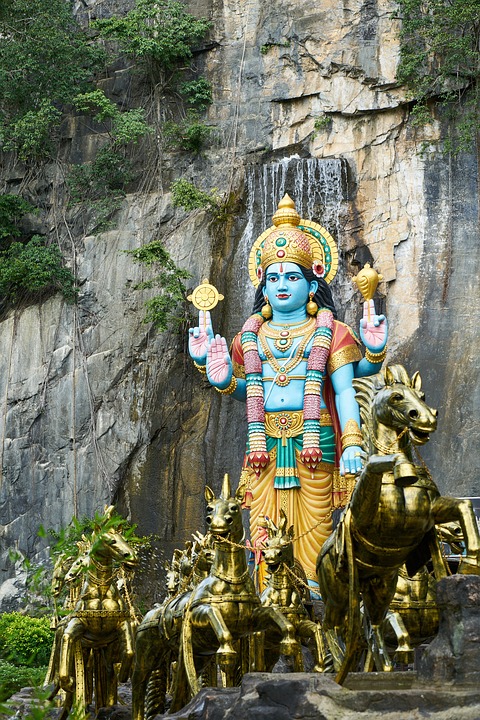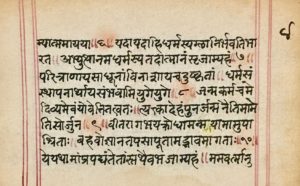Hinduism is a worldwide religious tradition and is generally regarded as one of the oldest religions still practiced in the world. Hinduism is practiced by most followers through the Puja (prayer) of God in the form of a murti (statue) and very often accompanied by the offering of flowers, fruits, and milk. In addition to the Puja, several various rites and rituals (some contradictory) form part of the Hindu’s practice of religious duties. Some examples of Hindu rituals include bathing in the Ganges River, which is believed to purify the human body and mind.
Hinduism Celebrations and Rituals
A multitude of festivals are associated with Hinduism, for example, the Ram Lila, which is celebrated in memory of Rama’s triumph over Rawana. Hinduism also involves the practice of Yoga, which involves union with the Divine, or integration of the body, mind, and spirit through meditation.
The origin of collective Hindu thought cannot be ascribed to any single founder (though most of its later schools of philosophy and belief can be) or associated with a specific time or a single place of foundation. The Vedas, the earliest Hindu scriptures, is the compilation of spiritual laws and truths binding upon all of creation. It is believed that each Veda was revealed to enlightened sages, called Rishis, over a long period of time.
Modern Hinduism grew out of the knowledge described in the Vedas. The earliest of these, the Rigveda centers on the worship of the deities Indra and Agni, and on the Soma ritual. They would perform fire-sacrifices called yajna with the chanting of the 1028 verses of Vedic mantras, but they built no temples, idols or icons.
Who is God in Hinduism
Worship of God is often represented symbolically through the aid of icons (murti) which are conduits for the devotee’s consciousness, markers for the human mind that signify the ineffable and illimitable nature of the power and grandeur of God. Hinduism has been viewed as polytheistic and promoting idol worship. However, the existence of numerous human forms and idols of God is an implied principle in Hindu thought. Each human form or idol is associated with an important fable, and these representations help people remember and contemplate over them more easily. Rather, criticized idol worship is in actuality veneration of an icon, where an icon is used to focus on God, rather than being the object of worship itself.
What can be said to be common to all Hindus is the belief in Dharma (individual ethics, duties, and obligations), Samsara (Reincarnation/rebirth), Karma (“actions”, leading to a cause and effect relationship), and Moksha (salvation) of every soul through a variety of paths, such as Bhakti (devotion), Karma (selfless action) and Jnana(enlightenment, knowledge), and of course, belief in God (Ishvara/Bhagavan). However, most importantly, religion to the Hindu is the search for the Brahman, the Cosmic Spirit.
Stages of Hinduism
Ideally, human life is divided into four ashramas (“phases” or “stages”). They are Brahmacharya, Grihastha, Vanaprastha, and Sannyasa. The first quarter of one’s life, Brahmacharya (“meditation or study of the Brahman”) is spent in celibate, controlled, sober and pure contemplation under a Guru, building up the mind for the realization of truth. Grihastha is the householder’s stage, alternatively known as samsara, in which one marries and satisfies kama and artha within one’s married and professional life. Vanaprastha is gradual detachment from the material world, giving over duties to one’s children, spending more time in contemplation of the Divine, and making holy pilgrimages. Finally, in Sannyasa, the individual goes into seclusion, often envisioned as renunciation, to find the Divine through detachment from worldly life, and peacefully shed the body for the next life (or, for liberation).
What is the Bhagavad Gita
The Bhagavad Gita is one of the more popular sacred texts of Hinduism. The Bhagavad Gt, meaning “The Divine Song”, refers to itself as a Yoga Upanishad. It expounds on Karma Yoga, Bhakti Yoga, and Jnana Yoga. It is an integral part of the epic Mahabharata, and contains philosophical sermons taught by Krishna, an incarnation of Vishnu, to the Pandava princes just before a great war. The Bhagavad Gita has inspired a number of politicians, including Mahatma Gandhi.







